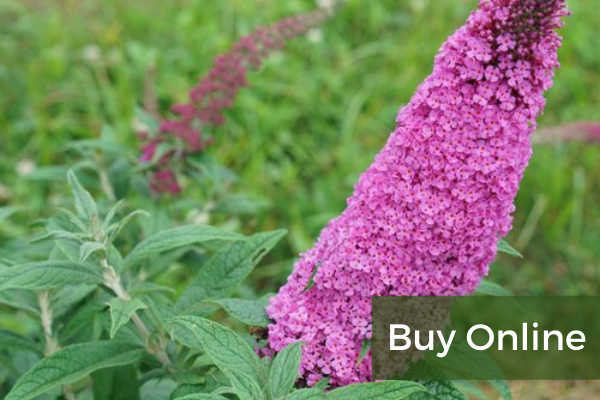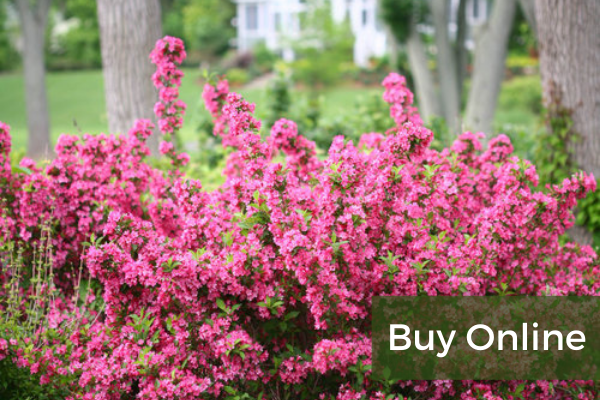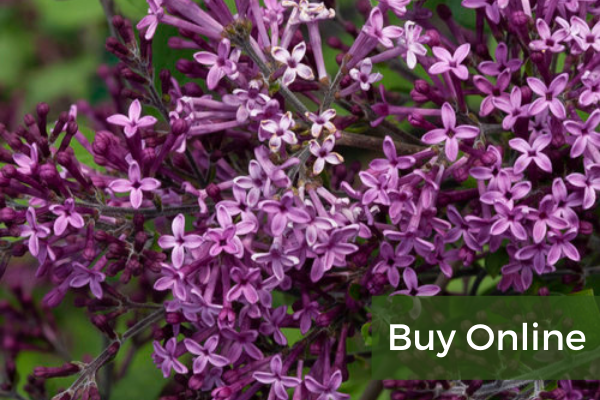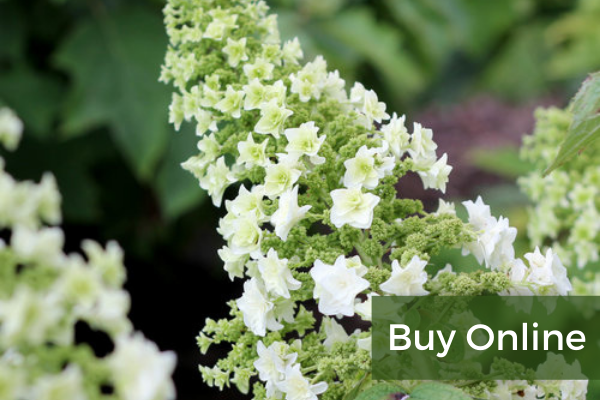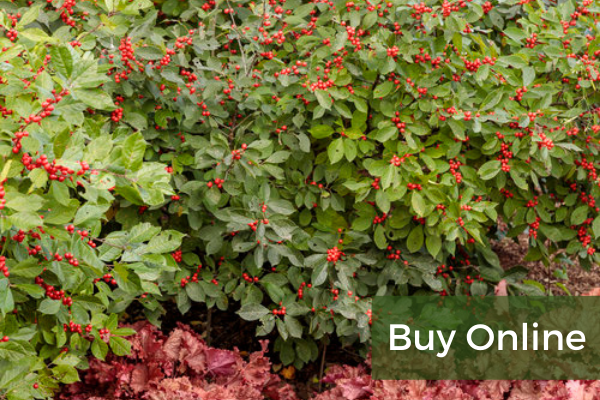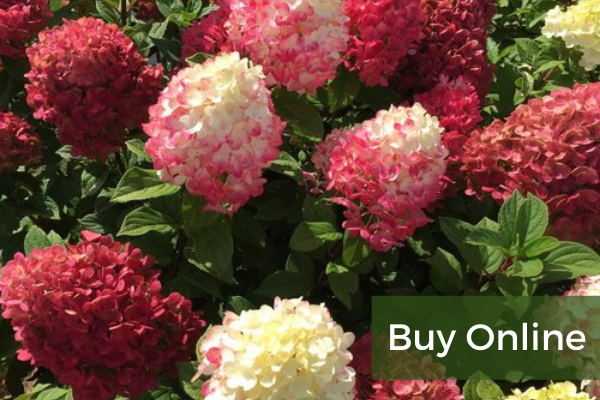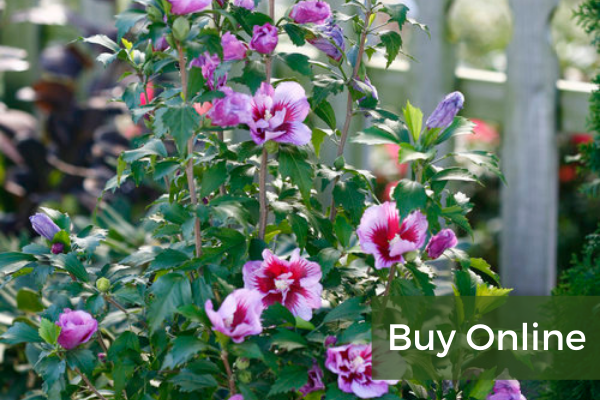Gardening for pollinators – insects, birds, and even bats that feed on the nectar, pollen, and leaves for plants – isn’t just a trend. It’s key to growing a garden that amplifies not just the beauty of plants, but also the role each plays in our natural ecosystem. If you’re loving your perennials for pollinators, but you’re on the fence about adding shrubs, one of the shrubs below will make you a convert. Each one is beautiful, easy to grow, and the pollinators they bring in will add another layer of excitement to your garden’s display. We recommend that you try more than one variety, layering in plants for all seasons, to invite nature’s visitors to your home for months each year.
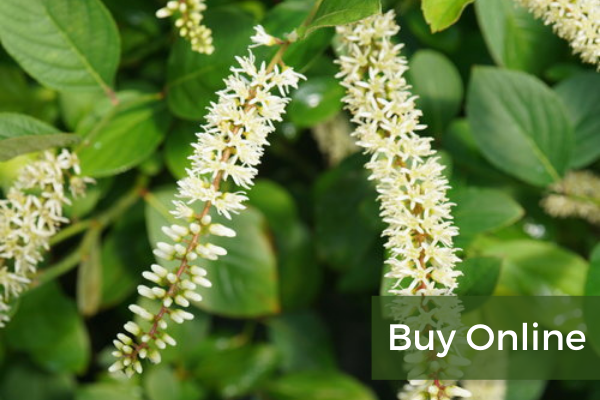 Abelia
Abelia
Abelia has very fragrant, trumpet-shaped white flowers that draw mobs of butterflies and hummingbirds to it! There are two other features that make it especially useful as a pollinator plant: 1) it blooms late summer through mid-autumn, providing nectar at a time when migrating pollinators, in particular, need to load up on food and 2) it blooms for a very long time, making it a reliable source of sustenance.
Top Pick: Proven Winners Sweet Emotion®
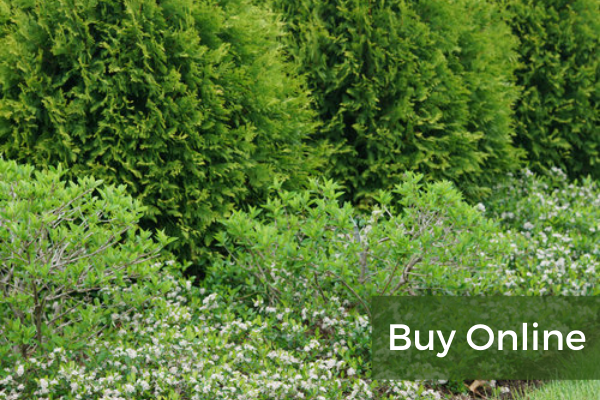 Aronia
Aronia
People tend to associate pollinators with summertime, when it seems every plant is abuzz with insect activity. However, spring is a crucial time for insects as well, as those that migrate or awaken from dormancy are hungry for a good meal. Aronia is covered in nectar-rich white flowers in mid-late spring so makes the perfect “breakfast” for your pollinator cafe. Each is dotted with a crown of pink pollen, making it all the more enticing to gardeners and pollinators alike. In late summer, dark purple berries develop, attracting birds and other wildlife. This native shrub was selected for its low, dwarf habit, allowing aronia to be planted in areas it could never grace in its conventional large form. It’s a pollinator plant anyone has room for!
Top Pick: Proven Winners Ground Hug®
Butterfly Bush
A list of shrubs for pollinators would be incomplete without a butterfly bush. While these colorful, long-blooming shrubs sometimes get a bad rap because they only feed butterflies and not the caterpillar, or larval, stage of a butterfly’s life, their appeal to humans and hummingbirds can’t be denied. Though we offer several butterfly bush selections, our pick for this list is ‘Miss Violet,’ an award winning, non-invasive variety with color that you just have to see to believe – blooms are a vibrant purple tone that really pops in the summer landscape. Just be sure to round out your planting with some additional shrubs that sustain other stages of insects’ life cycles.
Top Pick: Proven Winners Pugster Pink®
Weigela
Butterflies and hummingbirds love the weigela’s trumpet shaped flowers. Weigela is dense with coarse branching limbs that are very showy when in bloom. Modern day hybridizations have changed the common weigela from 20 years ago, adding extensive flower color selection, interesting foliage variegation, and broad range in size from the very small groundcover to the large bush. Today, Weigela varieties are high impact, versatile summer blooming shrubs that are striking in borders and hedges as a foliage feature.
As true butterfly and hummingbird shrubs, weigela make tremendous centerpieces in a summer perennial garden built to attract pollinators. It can be planted as a hedge or summer screen, but will lose its leaf in the winter. Barberry and hydrangea make good companion shrubs. Weigela is remarkably disease resistant when planted in full sun; crowding the shrub or planting it in shade can sometimes lead to fungal issues.
Top Pick: Proven Winners Sonic Bloom® Pink
Reblooming Lilac
There’s so much blooming in spring that it would be easy to overlook the bees and butterflies that visit lilac then. But with a reblooming lilac like Bloomerang Dwarf Purple, which blooms in spring along with other varieties then comes back with waves of fresh flowers in summer and fall, you’re sure to notice them sooner or later. These additional blooms are especially popular with butterflies, expanding the offerings at the garden’s buffet.
Top Pick: Proven Winners Bloomerang® Dark Purple
Oak Leaf Hydrangea
Oak Leaf Hydrangea has lacecap flowers that attract pollinators. It emits a sweet, honey-like fragrance that carries on the warm summer breeze, and those big, showy blooms take on a glorious deep pink color as they age. This North American native welcomes all sorts of wildlife: the wooly hairs on the emerging leaves can be harvested by insects and birds for nesting material, as can the peeling bark in winter, which also provides cozy spots for pollinating insects to spend their dormant season.
Top Pick: Proven Winners Gatsby® series
Winterberry
Winterberry produces copious amounts of bright red berries that really shine in the fall and winter landscape. It is a deciduous holly, which means it loses its leaves in fall, but this makes that vivid fruit even showier. The berries can also be cut for use in floral arrangements. To produce berries a male and female plant are both required. Berries are not edible for humans but are relished by birds after they’ve softened in mid-winter. Native to North America.
- Grows well in tough conditions, like shade and wet soil
- Adds fall interest and color to the winter landscape
- Produces Berries that attract wildlife
- Deadheading Not Necessary
Top Pick: Prove Winners Berry Heavy® and Berry Nice®
Panicle Hydrangea
Hydrangeas are not the first plant most folks think of when it comes to pollinator plants, but the fact is the lacecap varieties like Little Lime Punch, which display their nectar and pollen rich fertile florets prominently, bring in the buzz in a big way. Easy-care panicle hydrangea are practically foolproof and can be easily grown in both hot and cold climates. Though the mophead varieties – the ones that form the big, full, fluffy flower heads – are usually considered showier, looking for lacecap varieties ensures you’re doing something good for pollinators as well as beautifying your landscape.
Top Picks: Proven Winners Little Lime Punch®
Rose of Sharon
The big, satellite dish-like flowers that make Rose of Sharon so popular with people also make them attractive to pollinators. If you grow them, you’ve no doubt been treated to the sight of a bumblebee so heavy-laden with pollen that it can barely fly away from the flower. They’re a favorite of hummingbirds, too – fortunately, the long bloom time and very heavy bloom set ensure there’s plenty of nectar and pollen for all visitors. If you live in USDA zone 4 and can’t grow rose of Sharon, try a perennial hibiscus like the Summerific® series.
Top Pick: Proven Winners Lil’ Kim® series

